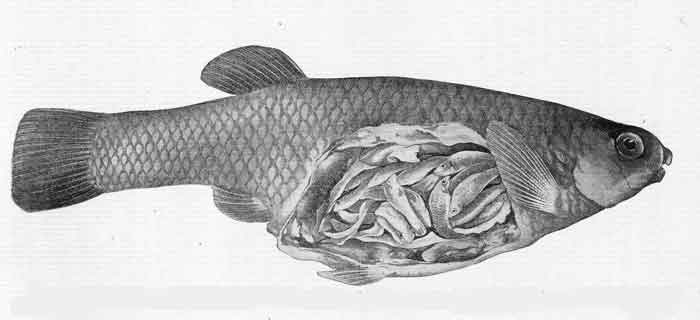Superregnum: Eukaryota
Cladus: Unikonta
Cladus: Opisthokonta
Cladus: Holozoa
Regnum: Animalia
Subregnum: Eumetazoa
Cladus: Bilateria
Cladus: Nephrozoa
Superphylum: Deuterostomia
Phylum: Chordata
Subphylum: Vertebrata
Infraphylum: Gnathostomata
Megaclassis: Osteichthyes
Superclassis/Classis: Actinopterygii
Classis/Subclassis: Actinopteri
Subclassis/Infraclassis: Neopterygii
Infraclassis: Teleostei
Megacohors: Osteoglossocephalai
Supercohors: Clupeocephala
Cohors: Euteleosteomorpha
Subcohors: Neoteleostei
Infracohors: Eurypterygia
Sectio: Ctenosquamata
Subsectio: Acanthomorphata
Divisio/Superordo: Acanthopterygii
Subdivisio: Percomorphaceae
Series: Ovalentaria
Superordo: Atherinomorphae
Ordo: Cyprinodontiformes
Subordo: Cyprinodontoidei
Familia: Goodeidae
Subfamilia: Goodeinae
Genus: Goodea
Species (3): G. atripinnis – G. gracilis – G. luitpoldii
Name
Goodea Jordan, 1880: 299
Gender: [Feminine]
Type species: Goodea atripinnis Jordan, 1880
Fixation: Monotypy
References
Jordan, D.S. 1880: Notes on a collection of fishes obtained in the streams of Guanajuato and in Chapala Lake, Mexico, by Prof. A. Dugès. Proceedings of the United States National Museum 2(94): 298–301. BHL Reference page.
Links
Goodea – Taxon details on Integrated Taxonomic Information System (ITIS).

Goodea luitpoldii
Goodea is a genus of splitfins that are endemic to Mexico. They are found in a wide range of habitats in several river basins that originate in the Central Plateau, such as Pánuco, Lerma–Chapala–Grande de Santiago and Balsas. Overall this genus is among the most widespread and successful splitfins, although they also have declined and the relatively restricted G. gracilis is considered vulnerable by the IUCN. This genus includes the largests splitfins, reaching a standard length of up to 20 cm (8 in). They are primarily herbivores, but also take small organisms like tiny crustaceans and snails.[2] The is named in honour of the American ichthyologist George Brown Goode (1851-1896).[3]
Species
Three species are typically recognized in this genus,[4] but the taxonomy is disputed and some only recognize G. atripinnis (in which case the other two are junior synonyms).[2]
Goodea atripinnis D. S. Jordan, 1880 (Blackfin Goodea)
Goodea gracilis C. L. Hubbs & C. L. Turner, 1939 (Dusky splitfin)
Goodea luitpoldii (Steindachner, 1894) (Green goodea)
References
Eschmeyer, William N.; Fricke, Ron & van der Laan, Richard (eds.). "Goodea". Catalog of Fishes. California Academy of Sciences. Retrieved 19 September 2019.
"Goodea atripinnis (including gracilis and luitpoldi)". Goodeid Working Group. Retrieved 23 September 2018.
Christopher Scharpf; Kenneth J. Lazara (26 April 2019). "Order CYPRINODONTIFORMES: Families PANTANODONTIDAE, CYPRINODONTIDAE, PROFUNDULIDAE, GOODEIDAE, FUNDULIDAE and FLUVIPHYLACIDAE". The ETYFish Project Fish Name Etymology Database. Christopher Scharpf and Kenneth J. Lazara. Retrieved 20 September 2019.
Froese, Rainer; Pauly, Daniel (eds.). "Species in genus Goodea". FishBase. August 2012 version.
Retrieved from "http://en.wikipedia.org/"
All text is available under the terms of the GNU Free Documentation License

